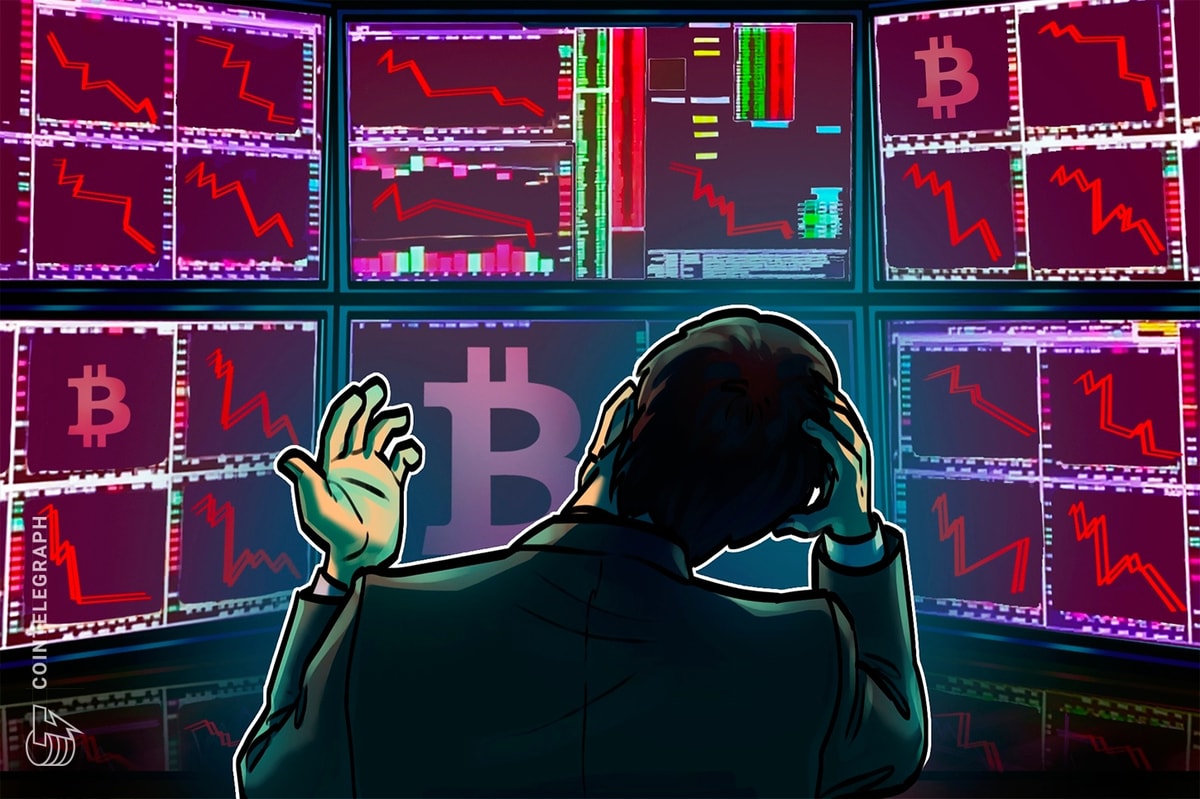The time-travel millionaire myth
It’s almost an irresistible daydream: step into a time machine, buy a pile of Bitcoin for pennies in 2010 and return to the present to find millions sitting in your account.
In March 2010, the first recorded Bitcoin exchange price was about $0.003 per Bitcoin (BTC), and prices never rose above $0.40 that year. Today, BTC trades well into the six-figure range.

The truth is, becoming a Bitcoin millionaire requires much more than buying early.
You would have needed to build a large BTC position and then hold it through multiple 80% to 90% price crashes, exchange failures like Mt. Gox, shifting regulations, the risk of losing your private keys and years of temptation to take “life-changing profits.”
This article looks at Bitcoin’s volatile price history, the headline-driven shocks, the behavioral traps that trip up even seasoned investors and the math that makes this fantasy so unlikely.
Surviving Bitcoin’s price rollercoaster
Bitcoin’s journey from obscurity to six-figure valuations was a series of sharp surges followed by brutal crashes, many of which would have led a sane person to cash out.
- 2010-2011: In January 2010, $1 could buy about 333 BTC at roughly $0.003 each. By June 2011, when Bitcoin peaked at $30, that same stash was worth almost $10,000. Soon after, the price collapsed, and the net value of those 333 BTC fell to about $666.
- 2013: The same stack soared to roughly $88,000 at the $266 April high, then plunged to over $16,500 by summer. By November’s $1,000 peak, you’d be looking at $333,000 (that’s brand-new Lambo money).
- 2014-2015: The Mt. Gox collapse gutted market confidence, sending the price to around $150 and your stack to almost $50,000
- 2017-2018: At around $20,000, your initial $1 investment hit $6.66 million. But by the 2018 low, it fell to about $1.13 million (still substantial, but a steep drop).
- 2020-2022: COVID-19’s “Black Thursday” halved Bitcoin’s price in two days. The November 2021 all-time high of $69,000 pushed your stack to $22.98 million, only to slide to $5.29 million a year later.
- 2024-2025: In March 2024, Bitcoin reached a new all-time high above $73,000, making your original dollar worth more than $24 million.
After surviving all that — the euphoria, the crashes, the scandals — there’s one last question: Why would you sell now?
In a way, unrealized gains in Bitcoin are like quantum superposition — they only “collapse” into reality when you sell. Until that moment, your millions exist only as numbers on a screen, still hostage to Bitcoin’s next move.
Did you know? Andrew Tate has famously remarked that after about $20 million, more money won’t change your daily life (unless you’re aiming for luxuries like a private jet or a yacht).
Headlines that could shake any Bitcoin believer
Not all selling pressure came from price drops. Some of Bitcoin’s biggest tests came from news events that challenged even the most committed hodlers. For example:
- Exchange disasters: In 2014, Mt. Gox (then handling over 70% of global Bitcoin trading) revealed it had lost more than 650,000 BTC. Bankruptcy wiped out thousands of early investors. Moreover, in 2016, the Bitfinex hack saw more than 119,000 BTC stolen, and it understandably sparked fears of more exchange failures. There are plenty more of such examples.
- Crime and stigma: The FBI’s 2013 takedown of Silk Road linked Bitcoin to illegal trade in the public mind. Multimillion-dollar wallet seizures resurfaced for years, fueling debate over whether Bitcoin was inherently tied to crime.
- Policy shocks: China repeatedly disrupted markets — from its 2013 banking ban to 2017 exchange closures to the 2021 announcement making all crypto transactions illegal. Each event sparked fears of wider crypto regulation crackdowns.
- Forks: The 2017 blocksize debate, the Bitcoin Cash fork and the abrupt SegWit2x cancellation divided the community and raised questions about Bitcoin’s scalability.
- Industry implosions: The 2022 FTX collapse (at the time the second-largest crypto exchange) triggered a liquidity crisis and “crypto is dead” headlines across mainstream media.
Each of these moments forced investors to reconsider: Is holding worth the risk?
Even if you had the foresight to buy Bitcoin early and the discipline to hold through every market crash, scandal and policy shift, there’s a real possibility you wouldn’t still have your coins today.
You might have lost access to it, too
Bitcoin ownership is binary (you either control the private keys or you don’t), and once they’re lost, your fortune is gone.
Lost coins are a major factor. Chainalysis estimates that 2.3 million-3.7 million BTC is permanently out of circulation, locked in wallets with keys that were misplaced, destroyed or otherwise inaccessible. Many of these belonged to early adopters who treated Bitcoin as a curiosity, storing it on laptops or external drives that were later wiped, recycled or discarded.
One of the most famous examples is James Howells, an engineer from Newport, Wales who accidentally threw away a hard drive containing about 8,000 BTC (now worth hundreds of millions) and has spent years seeking permission to dig through a landfill to recover it.

Even diligent holders weren’t immune. Coins stored on exchanges that later failed (such as Mt. Gox or QuadrigaCX) could disappear overnight, leaving “holding” out of the owner’s control. In Bitcoin’s history, the bigger danger often wasn’t selling too soon but losing access completely.
Did you know? In 2014, the Mt. Gox collapse froze over 650,000 BTC, leaving thousands of holders unable to access their coins. For many, “hodling” wasn’t a choice; their Bitcoin was simply gone.
The reality for those who did hold on
History shows there are almost no documented cases of the $1-to-Bitcoin-millionaire story by 2025. Instead, the following examples reflect the scenarios that occurred far more often.
- Kristoffer Koch bought around 5,000 BTC in 2009 for $26.60 and sold 1,000 BTC to buy an apartment, years before Bitcoin’s biggest rallies.
- Stefan Thomas lost access to over 7,000 BTC ($400 million today) due to a forgotten password.
- The Winklevoss twins became Bitcoin billionaires after buying around 70,000 BTC with an $11 million lump sum in 2013, long after Bitcoin’s sub-$1 days.
- Li Xiaolai accumulated over 100,000 BTC by making large purchases in 2011, not with spare change.
To cut a long story short, Bitcoin fortunes were not made by a casual buy-and-forget strategy with mere pocket money.
They came from large early stakes, strict security practices, exceptional discipline and the rare ability to endure both parabolic rises and severe crashes without panic selling.
That’s why the “time-travel millionaire” idea remains more myth than reality and why the number of people who have lived through Bitcoin’s full price history while still holding their original stack is vanishingly small.

 2 hours ago
2
2 hours ago
2
















 English (US) ·
English (US) ·